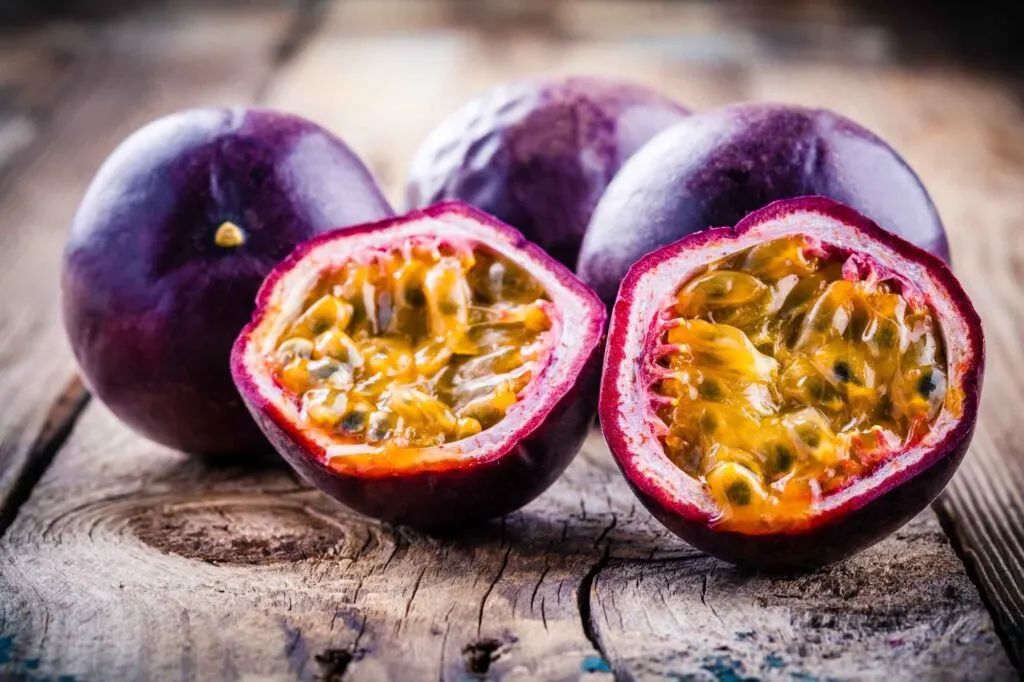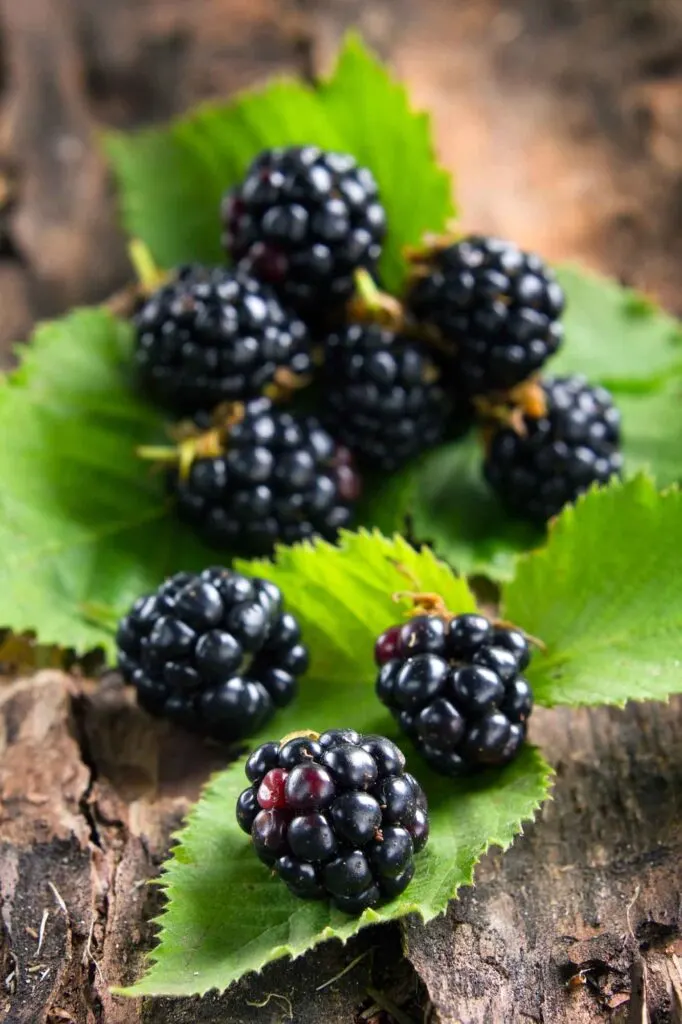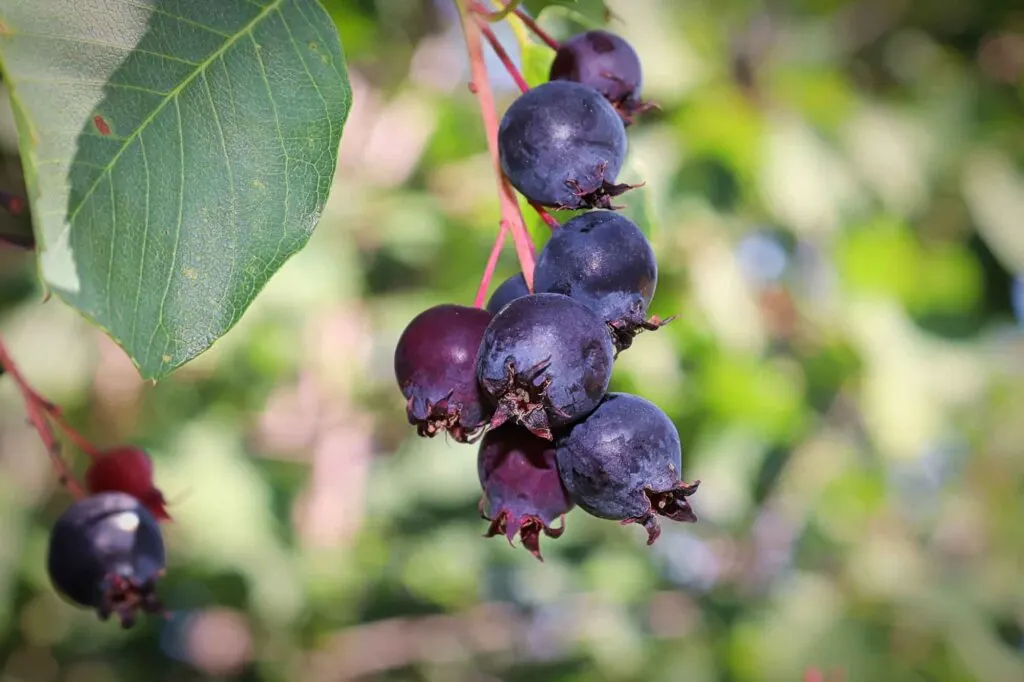Purple fruits are key to a balanced diet because they are excellent sources of vitamins, antioxidants, and minerals.
All fruits that are purple have an antioxidant called anthocyanin, which not only gives its color but also packs a bunch of health benefits for you, as you will read in this article.
Since a healthy diet is a colorful diet, we sincerely hope you include these purple fruits in your daily routine.
Hey, you! Do you know more purple fruits? Then let us know in the comments!
Are Purple Fruits Healthy?
Colors often determine the type of nutrient found in food, and the purple color found on some fruits is due to the high content of anthocyanins.
Purple vegetables and fruits are rich in antioxidants, especially anthocyanins. These antioxidants are compounds that help fight against unstable molecules called free radicals.
A 2004 study by the University of Illinois suggests that anthocyanins have an array of health benefits, including reducing cholesterol, managing diabetes, lowering inflammation, lowering the risk of heart disease, maintaining brain health, and so.
Also, a study shows that fruits that are purple can boost eye and heart health, reduce cancer cell proliferation and boost mental power.
Eating purple food benefits people who consume a high-fat diet, which can lead to being overweight or obese.
In addition to anthocyanins, purple fruits contain nutrients like vitamins A and B2, potassium, fibers, and phenols.
For these reasons, purple produce is very healthy and has many benefits.
Why Are So Few Foods Purple?
A visit to a fruit market and you will likely see a wide rainbow of colored fruits, but when it comes to fruits that are purple, your options are much limited. After all, there aren’t many purple things in the world.
To understand why there are few purple foods, one must know where the purple color comes from.
Anthocyanins present in purple fruits are the primary pigment responsible for the purple hue found in some fruits.
However, the intensity and shade of the color depending on the quantity of anthocyanins present and the pH of the fruit tissues. That means the more anthocyanins in the fruits, the more purple the fruit is.
Also, while anthocyanins are linked to purple fruits, the pigments can range from red to blue and black, depending on their pH.
Not all fruits have enough anthocyanins or have the pH to take on a purple hue, and for this reason, they take on other colors.
12 Purple Fruits
Here’s a list of fruits that are purple in no particular order.
1. Passion Fruit

Passion fruits are healthy tropical fruits that are small in size but pack a lot of beneficial nutrients, especially antioxidants, minerals, and vitamins.
The fruit’s exterior feels a little rough, while the interior is soft and seedy, just like guava.
Passion fruits contain high content of a polyphenol compound called piceatannol, which is linked to some health benefits like improved skin health.
In addition, passion fruits contain high levels of vitamin C, which boosts the immune system, and vitamin A, which aids vision.
2. Blackberry

Blackberries are dark purple fruits full of antioxidants called anthocyanins which help improve digestive health, promote fat loss, and reduce the risk of inflammation and diseases like diabetes, high cholesterol, and cancer cells.
Asides from anthocyanins, blackberries contain nutrients like vitamin C, potassium, lutein, magnesium, and vitamin K, which are vital for blood clotting and wound healing. Also, carotene promotes good eye health.
Also, blackberries are classified as one of the highly rated fruits due to their high content of antioxidants (the darker the fruit, the higher the antioxidant level), which help neutralize free radicals in the body.
Studies show that blackberries can reduce the risk and slow the growth of breast, colon, lung, and prostate cancers.
These juicy treats are also super delicious, and you can eat them fresh, add them to your breakfast meals like oats, smoothies, and cereals, or include them in other recipes.
3. Purple Mangosteen

Purple mangosteen has a sweet-sour taste with tough purple skins you need to remove to enjoy the tangy white flesh-filled insides.
They are found in tropical regions and contain a lot of antioxidants that provide nutritional value. This tangy fruit also contains antioxidants known as xanthones and offers anti-cancer, anti-inflammatory, and neuroprotective properties.
Purple mangosteen also contains a lot of fiber and folate that help with many body functions, including the production of DNA and red blood cells.
4. Acai Berry

Acai berry is a Brazilian fruit[] commonly found in the rainforest of South America. They come from a specific palm tree and are often used as ingredients in smoothies, shakes, and purees since it is a nutritional powerhouse.
Acai Berries are also used in a Brazilian dish called acai bowls which contains berries as a base and toppings like fruits and granola.
Like other fruits that are purple, the acai berry contains high content of anthocyanins and, as such, offers health benefits like reducing blood pressure and protecting the heart.
Also, acai berries can help reduce weight, as a study suggested that the fruit helped improve blood sugar and lower cholesterol levels in overweight people.
5. Java Plum

Java Plums are rich in minerals and nutrients that provide a lot of health advantages. Dried plum is also often used to treat health conditions like osteoporosis and diarrhea.
Riper plums have more nutrients, and their peel contains 20 times the antioxidants found inside.
Also, they are loaded with a lot of vitamin C and help increase hemoglobin count and prevent infection. The seeds of the java plum have digestive properties and help treat diarrhea and dysentery.
You can enjoy your java plums on their own or use them in desserts, smoothies, jams, and other savories.
6. Saskatoon Berry

Saskatoon berries have blue-purplish color and are smaller than blueberries. They have a sweet earthy flavor and rich almond undertone.
In terms of nutritional value, Saskatoon berries have a high content of vitamin C, iron, and some antioxidants.
Also, they are rich in beneficial flavonoids, especially anthocyanins, flavonol, and proanthocyanidin, and research suggests they have antioxidant, anti-tumor, and anti-inflammatory properties.
This delicious berry is also an excellent source of fiber, potassium, manganese, and vitamin E.
You can eat your Saskatoon berry raw or cook them for a variety of recipes like Saskatoon sauce, crisps, cheese, and baked oatmeals.
7. Blackcurrant

Black currants are purplish blue fruits native to Central Europe and Northern Asia. These juicy fruits are rich in polyphenols like flavonoids and phenolic acid.
They have many health benefits, including boosting mood, lowering inflammation, and improving skin health.
Also, people used the seed oil, leaves, flowers, and fruits of the blackcurrant tree to make medicine. This is because blackcurrants are high in nutrients and antioxidants that give your immune system a boost and allow your body to fight infections.
Some of the nutrients found in blackcurrants include vitamin C, phenolic compounds, and essential oils. You can eat your blackcurrant raws, and they also work great in baking, cooking, and making jellies.
8. Purple Star Apple

Purple star apple has a shiny cover that then turns red-purple, green, and then dark purple as it ripens.
Star apples contain antioxidants that help fight free radicals and nutrients like calcium and potassium needed for stronger bones and teeth.
They are also rich in vitamin C, which helps boost the immune system and prevent iron deficiency.
Also, people have used the leaves, bark, and fruits of purple star apples to treat a variety of ailments like coughs, body pains, and diabetes.
Purple star apples are not only beneficial but delicious; they have creamy jelly-like flesh that tastes like a mix of sweet grape and persimmon.
9. Red Dragon Fruit

Red dragons are oval and have thin reddish purple skins and tiny, edible seeds. They have the texture of kiwi and have an earthly and mildly sweet taste.
Dragon fruits have a high concentration of antioxidants and nutrients like fiber, vitamin C, and magnesium. Also, a study shows that the extract of red dragon fruits stops the growth of cancer cells like breast cancers.
In addition, red dragon fruits can boost iron levels which is essential to move oxygen through the body. The vitamin C in red dragon fruits also helps your body absorb the iron for use.
You can add red dragon fruits to your fruit salads, smoothies, cheesecakes, puddings, and other recipes.
10. Elderberry

Elderberries are dark purple berries that come from the European Elder tree. They were used historically to treat certain ailments like cold and flu.
This is because the fruit is rich in antioxidants and nutrients that help boost the immune system.
Eating elderberries can help reduce stress, protect the heart, and reduce inflammation. Also, berries of elderberry can prevent flu and cold symptoms.
This low-calorie fruit is also well packed with a lot of dietary fibers, vitamin C, and antioxidants like anthocyanins, flavonols, and phenolic acids.
You can make syrups, jellies, and jam with elderberries, or you can eat it fresh or use it in recipes like pies.
11. Indigo Rose Tomato

Indigo rose tomato is the purple variety of tomatoes developed through natural cross-breeding selections.
These fruits have a high level of anthocyanins and a sweet acidic flavor that works with many recipes. Due to the high concentration of anthocyanins present in indigo rose tomatoes, they help fight cancers, slow aging, and reduce inflammation.
Research also shows that Indigo rose tomatoes can protect cells, aid cognitive functions, reduce cancer cell proliferation, enhance vision, and reduce heart diseases.
You can use these dark variants of tomatoes for salads, soups, pasta, and as you would your normal tomatoes.
12. European Plum

Plums are rich in phenols, a compound that helps with many health benefits, including minimizing blood pressure and reducing the level of blood cholesterol.
Also, European plums are a good source of vitamins, like vitamin C, which helps with iron absorption; vitamin B2, which helps improve digestion and vitamin A, which aids bone health.
They also contain powerful antioxidants that help improve bone health, improve digestion and reduce blood sugar levels. You can use fresh European plums for pies, tarts, smoothies, and other savory recipes.
Did you enjoy reading about these fruits that are purple? Then share it with your friends on social media!
